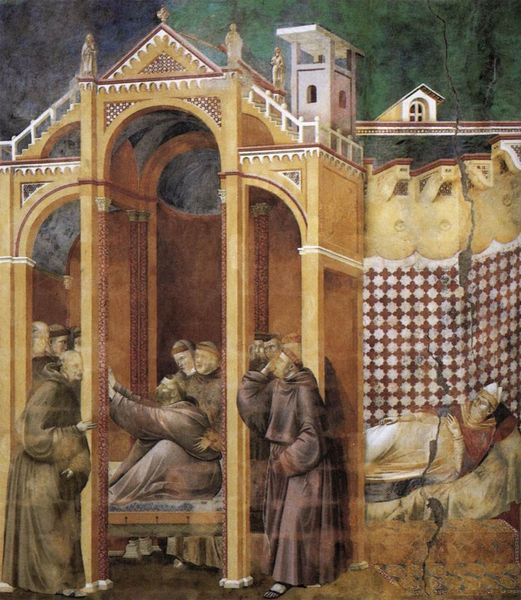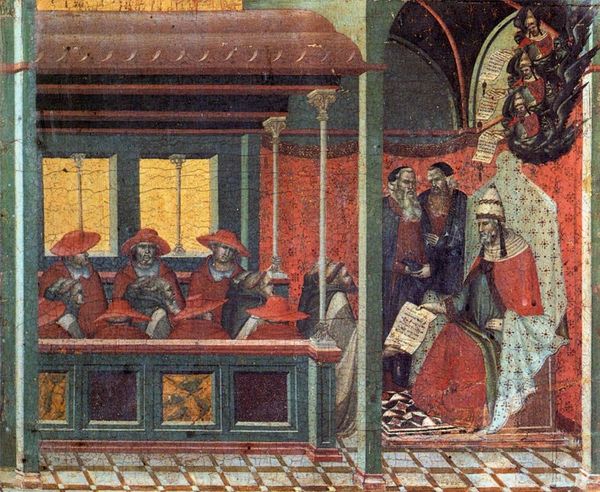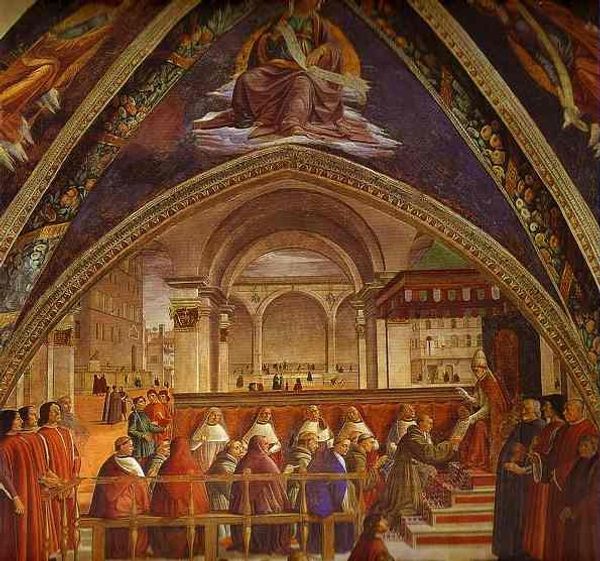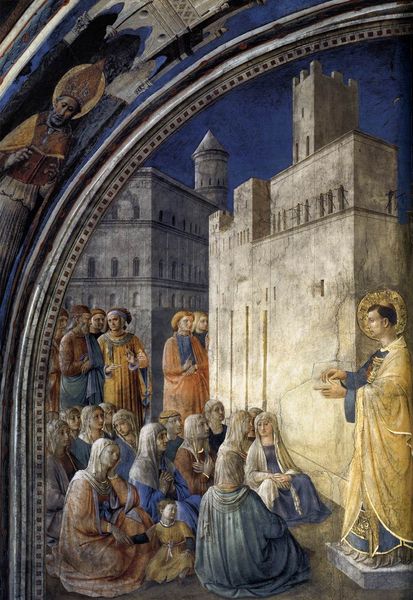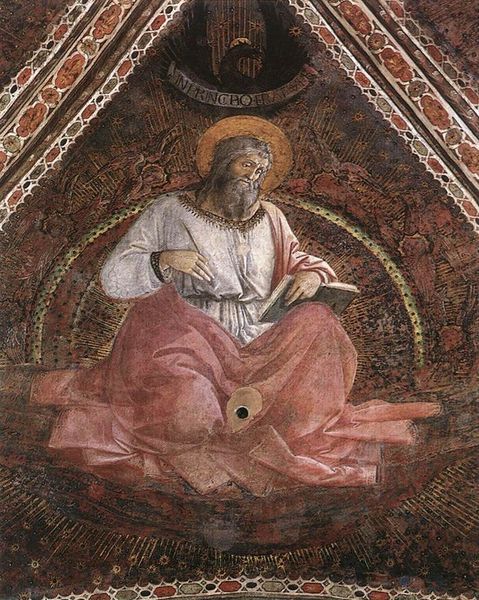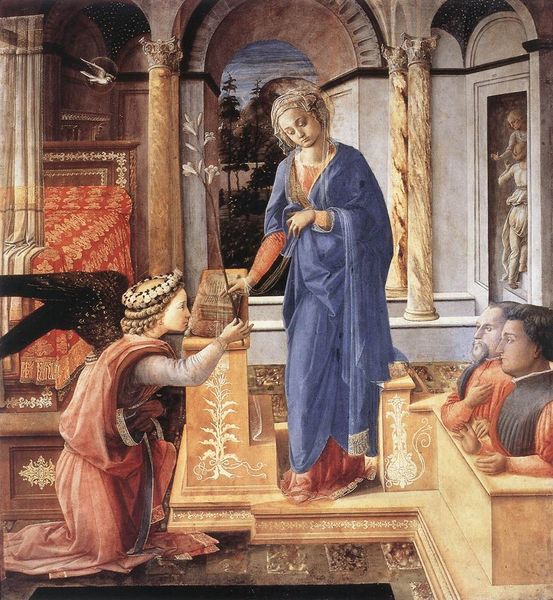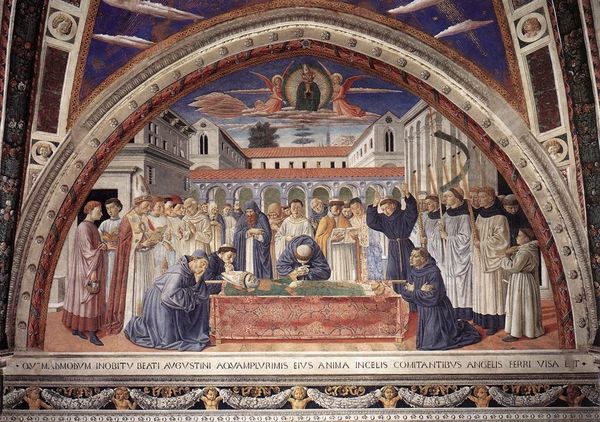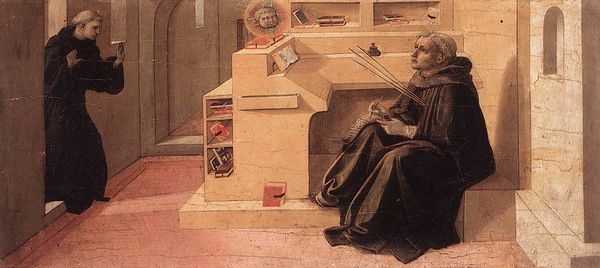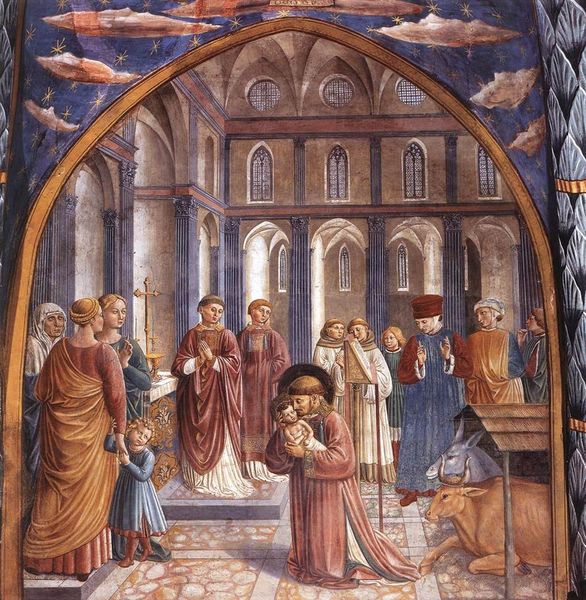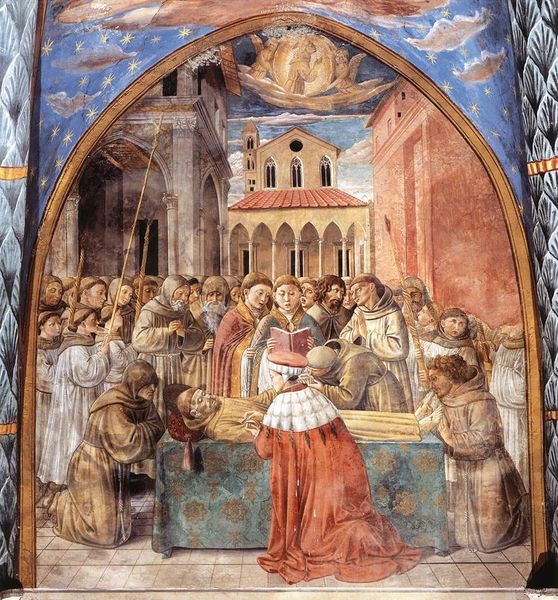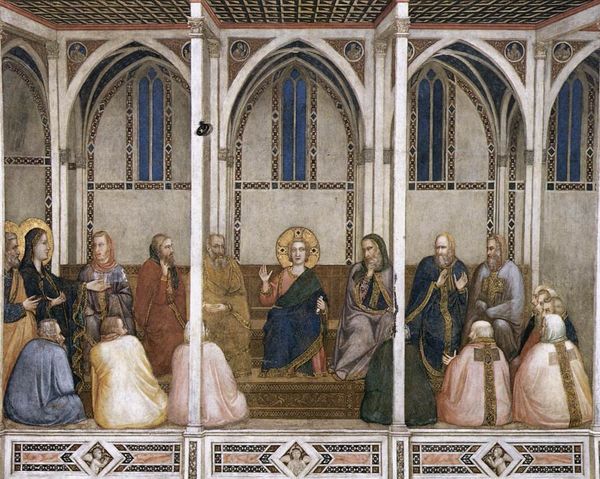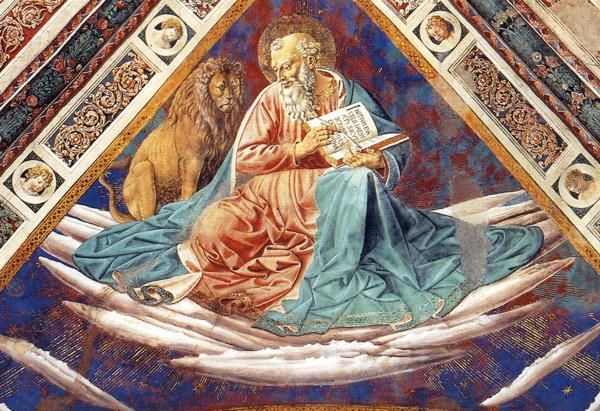
St. Augustine's Vision of St. Jerome 1465
0:00
0:00
benozzogozzoli
Sant'Agostino Church, San Gimignano, Italy
tempera, painting, fresco
#
portrait
#
tempera
#
painting
#
landscape
#
fresco
#
christianity
#
history-painting
#
italian-renaissance
#
early-renaissance
Copyright: Public domain
Curator: As we contemplate this fresco, painted circa 1465 by Benozzo Gozzoli, we find ourselves in the Sant'Agostino Church in San Gimignano, Italy, face to face with "St. Augustine's Vision of St. Jerome". My first impression is that it feels very dreamlike; a bit faded in its atmosphere. Editor: I agree. It has that ethereal quality characteristic of the Early Renaissance, but also there is such precision in the lines of that patterned arch; there’s almost a sacred geometry feel that pulls my eye in several directions. I wonder, what meanings are embedded here? Curator: Considering Gozzoli's interest in portraying saintly figures, this scene depicts Augustine’s vision. The symbolic significance resonates on multiple levels; it serves as a depiction of spiritual enlightenment and divine intervention, yet it may represent something very relevant about knowledge at that particular time in Italian history. Editor: And we see the figure of Augustine, caught mid-thought, almost receiving an answer from on high. The window and the books create this feeling of contemplation; then there’s the desk with implements ready, which evokes all that activity of medieval scholars carefully constructing knowledge. Curator: The Early Renaissance mind embraced the merging of faith and reason, didn’t it? The very presence of books underscores the importance of learning and scripture in understanding the divine. That’s what connects both figures for me – they symbolize a dialogue with the divine that requires an openness to both intuition and wisdom. The angel feels a bit more than mere embellishment here. Editor: A crucial element indeed! Its subtle presence emphasizes the sense of otherworldliness. What do you make of how history receives an image like this versus a religious painting from a few centuries earlier? Curator: These Italian Renaissance paintings remind the viewer that human perception, infused with knowledge, can mediate sacred revelation in a period of burgeoning rationalism, even when such revelation occurs as if in a dream. I keep seeing him bathed in divine inspiration; what an extraordinary moment frozen in time by Gozzoli! Editor: For me, the power of the work rests on how art can offer an important public narrative in a pivotal epoch. This one seems to speak to continuity more than rupture; it suggests that our encounters with the divine will not stop changing our lives or altering the flow of world events.
Comments
No comments
Be the first to comment and join the conversation on the ultimate creative platform.
